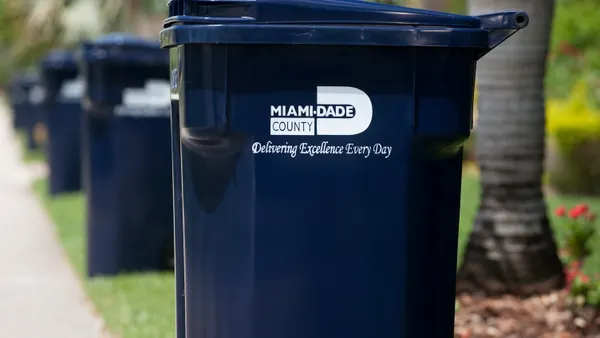Dive Brief:
- A national plan from the Chinese government released earlier this fall set a goal of processing more than 500,000 metric tons of waste through combustion in 2020 by doubling the amount of current facilities, as reported by Reuters.
- At the end of last year, China had 223 active waste-to-energy (WTE) facilities with more than 235,000 metric tons of daily capacity. This was short of a 300,000 metric goal set for 2015.
- Many of these facilities will be in rural areas, such as one recently built in the city of Wujiang by China Everbright International. The facility has capacity for 1,500 metric tons of waste per day and can produce 500,000 kilowatt-hours of energy.
Dive Insight:
As China continues to experience rapid population growth, particularly in urban areas where per capita waste generation is higher, the government is looking for solutions that don't involve using valuable space for landfills. WTE facilities like one being constructed in Shenzhen — which will be the world's largest — are seen as a way to solve the problem. Everbright is a major player in this field with dozens of facilities active or under construction and Hitachi Zosen is planning to expand its WTE portfolio in other Asian countries as well.
While the U.S. is also seeing urban population growth, it's far less likely that a wave of new WTE facilities will be built any time soon. Cheap, abundant landfill space makes the financial equation unfavorable for the technology and many major cities with "zero waste" goals don't plan to rely on WTE. Faced with this reality, WTE companies in the country are now more focused on expanding their businesses by processing specialized profile waste, and capturing more value from metals and other byproducts.
Stigma attached to the technology from bad experiences with older facilities is also a key issue that drives community opposition to the possibility of any new facilities in the U.S. China has announced plans to offer lower utility prices to residents living near WTE facilities though even that might not be enough to change the minds of some U.S. residents at this point.











